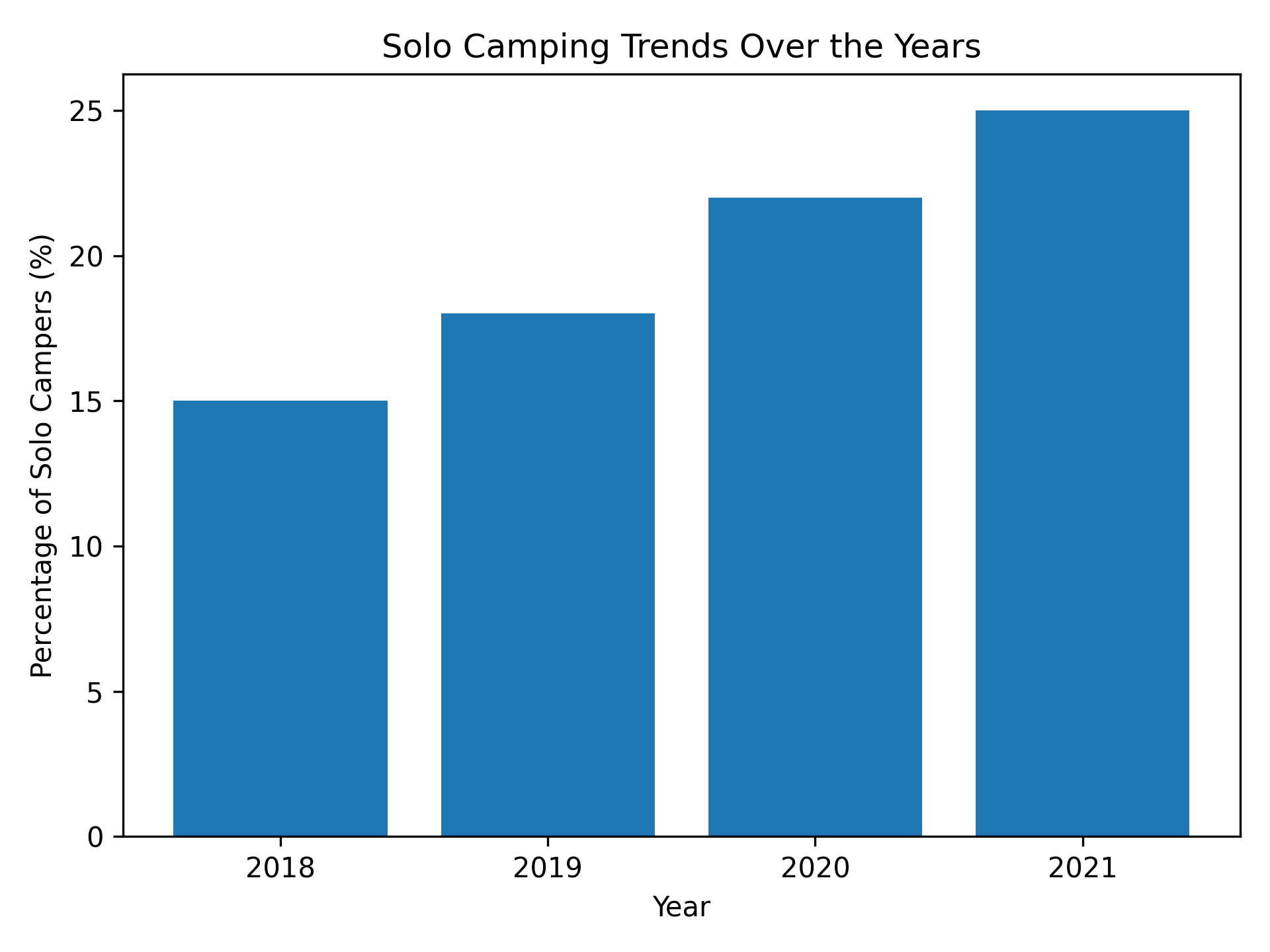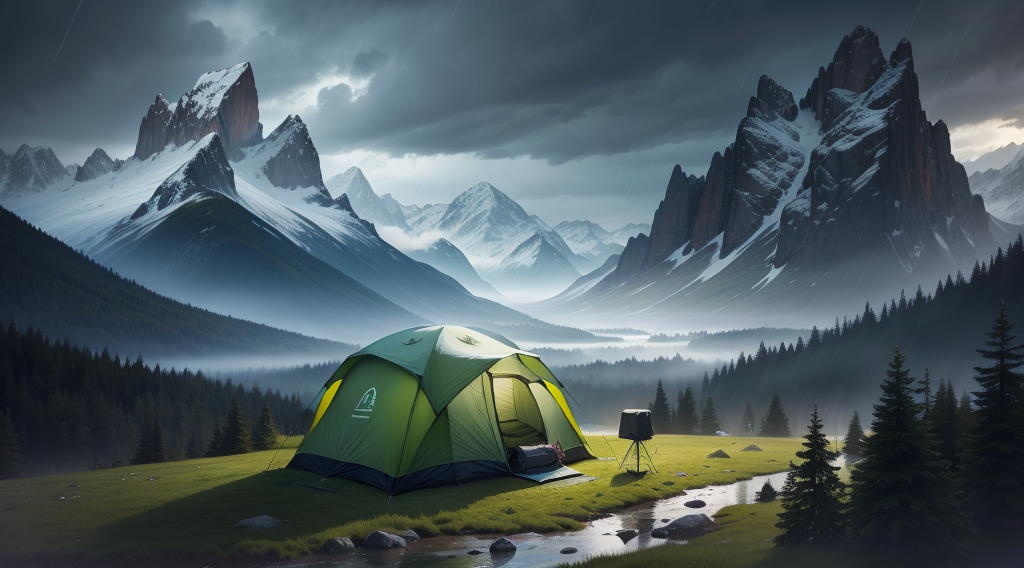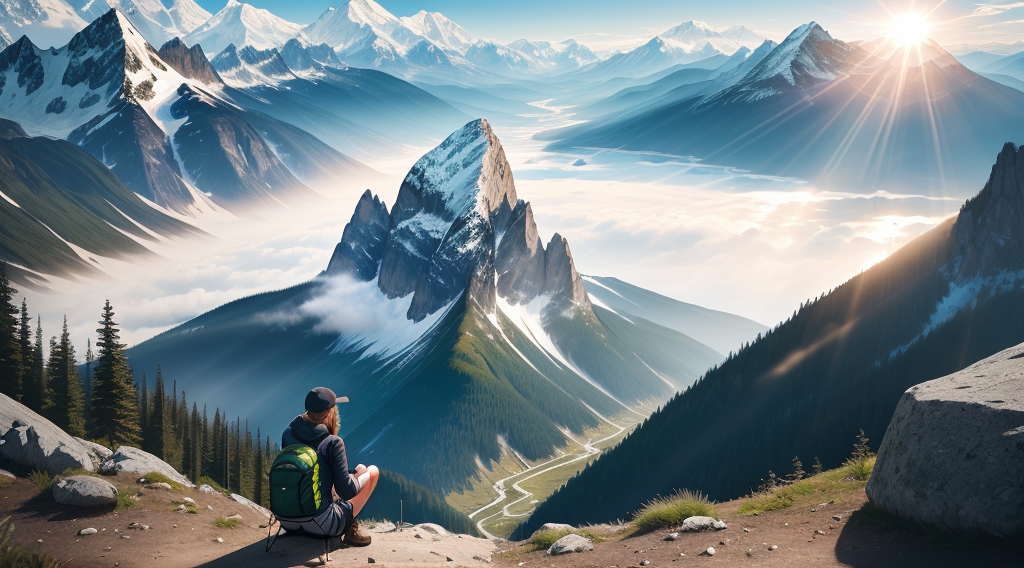Camping Alone has always been irresistible to many. Solo camping, a venture once considered daunting, has now become a growing trend among adventurers. It offers a unique blend of joys and challenges that can transform an ordinary camping trip into a journey of self-discovery.

The chart above showcases the rising popularity of solo camping adventures over the past few years. As more and more individuals seek solitude and a break from the digital world, solo camping has emerged as a favorite.
1. The Benefits of Camping Alone
- Self-discovery and Personal Growth: Without the distractions of companions or the digital world, solo camping provides an unparalleled opportunity for introspection. It’s a chance to confront your fears, understand your strengths, and grow as an individual.
- Flexibility in Planning and Decision-making: When you’re on your own, there’s no need to compromise. Want to hike that extra mile? Or maybe you’d prefer to lounge by the campfire with a book? The choice is entirely yours.
- A Deeper Connection with Nature: Solo camping amplifies the sounds, sights, and sensations of the natural world. With no one to chat with, you’ll find yourself more attuned to the chirping of birds, the flow of a nearby stream, or the rustling of leaves.
2. Activities to Enhance Your Solo Camping Experience
- Nature journaling to capture your thoughts and observations.
- Photography to document the beauty around you.
- Meditation or yoga amidst nature.
- Cooking a special meal just for yourself.
- Stargazing without any interruptions.
Looking for meal inspirations? Check out our Camping Food List.
3. Preparing for Your Solo Camping Trip
Research and Planning
Before embarking on your solo adventure, thorough research and planning are paramount. Here’s a checklist to guide you:
- Choosing the Right Location: Opt for well-known campgrounds or national parks initially. Familiarize yourself with the area, its amenities, and any regulations in place.
- Checking Weather Forecasts and Potential Hazards: Always stay updated with the latest weather predictions for your chosen location. Additionally, be aware of potential hazards like flooding zones, wildlife activity, or forest fire warnings.
Packing Essentials
| Item | Purpose |
|---|---|
| Lightweight Tent | Shelter |
| Sleeping Bag & Pad | Comfortable sleep |
| Multi-tool | Various tasks like cutting, fixing |
| Portable Stove & Fuel | Cooking |
| Water Filter/Purifier | Safe drinking water |
| Headlamp with Extra Batteries | Lighting |
- Importance of Lightweight and Multi-functional Gear: When you’re camping alone, every ounce counts. Opt for gear that serves multiple purposes to save space and weight. For instance, a spork can be both a fork and a spoon, and a sleeping pad can double as a yoga mat.
For a complete camp kitchen setup, don’t forget to check our Camp Kitchen Checklist.
Safety Preparations
Safety should be your top priority when camping alone. Here are some essential precautions:
- Informing Someone About Your Plans and Expected Return: Always let a trusted person know about your camping location, planned routes, and expected return date. Check-in with them at regular intervals.
- Carrying a First-Aid Kit and Emergency Tools: Equip yourself with a comprehensive first-aid kit. Additionally, carry emergency tools like a whistle, firestarter, and a personal locator beacon.
4. Setting Up Camp
Once you’ve reached your camping destination, the next step is to set up a secure and comfortable campsite.
- Choosing a Safe and Strategic Campsite: Look for elevated grounds to avoid flooding. Ensure you’re at a safe distance from water bodies to avoid wildlife encounters and sudden water surges.
- Setting Up a Tent and Campfire Safety: Ensure your tent is securely pegged to the ground. When setting up a campfire, clear the area of any flammable materials and always have a water source nearby to douse the fire when done.
- Storing Food to Avoid Wildlife Encounters: Use bear canisters or hang your food in a tree, away from your tent. This not only protects your supplies but also prevents attracting wildlife to your campsite.
5. Staying Safe While Exploring

Exploring the wilderness alone can be exhilarating, but it’s crucial to prioritize safety at all times.
- Navigating with a Map, Compass, and GPS: Even if you’re familiar with the area, always carry a map and compass. A GPS device can be a lifesaver, but remember that batteries can run out, and signals can be weak in remote areas.
- Recognizing and Avoiding Potential Dangers: Be aware of your surroundings. This includes watching out for potentially dangerous wildlife, being cautious on challenging terrains, and avoiding areas that look unstable or unsafe.
- Importance of Staying Hydrated and Nourished: Carry enough water and purifying tablets or filters. Pack nutrient-rich foods to keep your energy levels up.
6. Mental and Emotional Well-being
Solo camping can be a test of not just physical endurance but also mental strength.
- Overcoming Feelings of Loneliness or Fear: It’s natural to feel lonely or scared at times. Bring along a book, listen to music, or simply embrace the solitude to reflect and rejuvenate.
- Activities to Stay Engaged: Engage in activities that you love. This could be:
- Journaling your experiences.
- Capturing the beauty around with photography.
- Stargazing and identifying constellations.
- Mindfulness and Meditation Practices in Nature: The tranquility of nature provides the perfect backdrop for meditation. Practice deep breathing exercises, listen to the sounds of nature, and be present in the moment.
7. Leaving No Trace
As campers and nature lovers, it’s our responsibility to ensure that we leave the environment as we found it, if not better.
- Importance of Environmental Responsibility: Nature is a gift, and we must treat it with respect. This means not leaving behind any trash, not disturbing the wildlife, and being mindful of our ecological footprint.
- Packing Out All Waste and Minimizing Campsite Impact: Carry reusable containers, avoid using plastic, and ensure that you pack out all the waste you generate.
- Respecting Wildlife and Natural Habitats: Observe animals from a distance. Do not feed them, as it can harm their health and alter natural behaviors.
Solo camping is more than just an adventure; it’s a journey of self-discovery, resilience, and a deep appreciation for the natural world. By being prepared, staying safe, and practicing environmental responsibility, you can ensure that your solo camping experience is both rewarding and memorable. Embrace the solitude, listen to the whispers of the wild, and let nature be your guide.


Pingback: 6 Week Hiking Workout Plan - Outdoor Hype